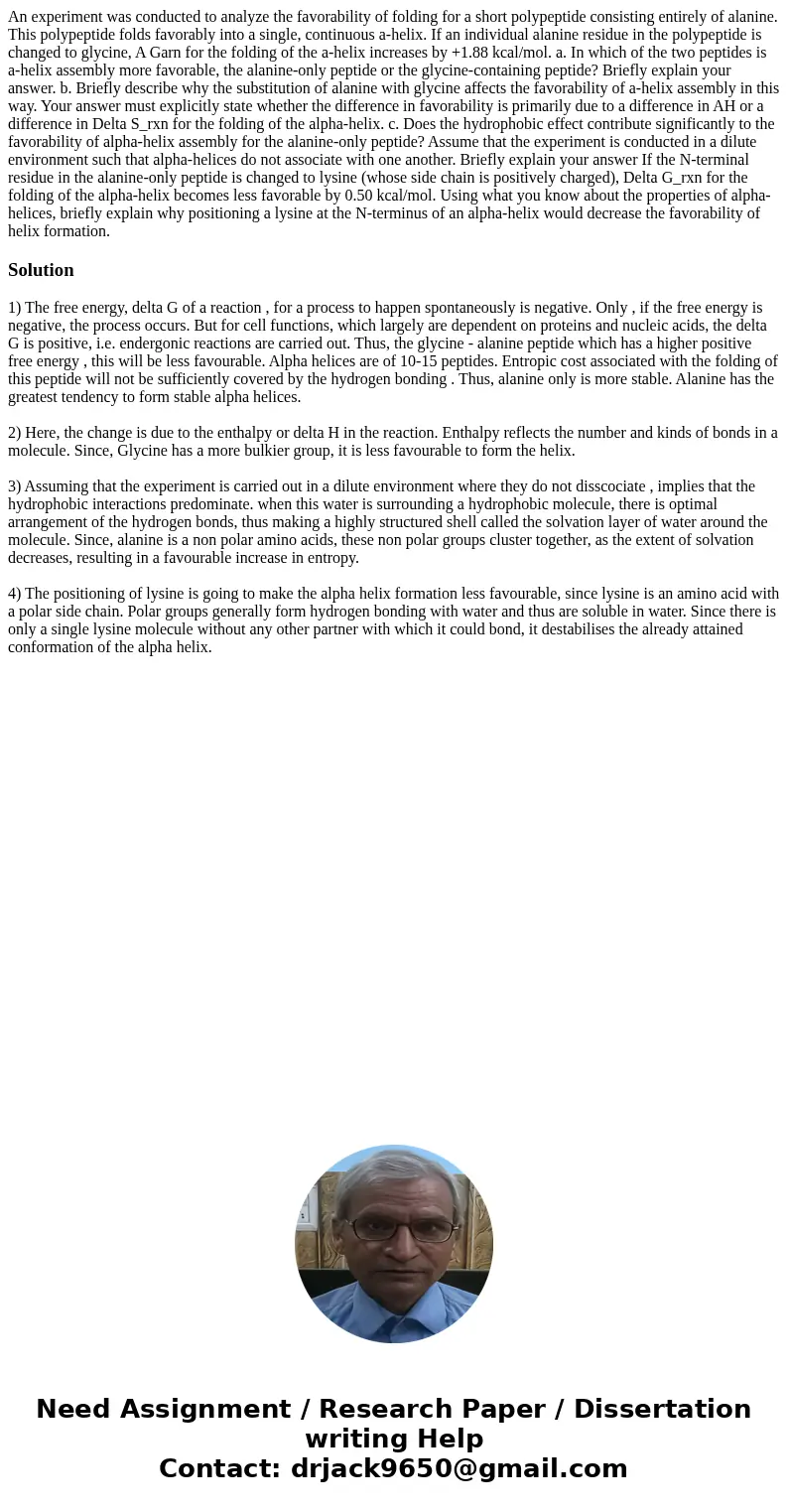An experiment was conducted to analyze the favorability of f
Solution
1) The free energy, delta G of a reaction , for a process to happen spontaneously is negative. Only , if the free energy is negative, the process occurs. But for cell functions, which largely are dependent on proteins and nucleic acids, the delta G is positive, i.e. endergonic reactions are carried out. Thus, the glycine - alanine peptide which has a higher positive free energy , this will be less favourable. Alpha helices are of 10-15 peptides. Entropic cost associated with the folding of this peptide will not be sufficiently covered by the hydrogen bonding . Thus, alanine only is more stable. Alanine has the greatest tendency to form stable alpha helices.
2) Here, the change is due to the enthalpy or delta H in the reaction. Enthalpy reflects the number and kinds of bonds in a molecule. Since, Glycine has a more bulkier group, it is less favourable to form the helix.
3) Assuming that the experiment is carried out in a dilute environment where they do not disscociate , implies that the hydrophobic interactions predominate. when this water is surrounding a hydrophobic molecule, there is optimal arrangement of the hydrogen bonds, thus making a highly structured shell called the solvation layer of water around the molecule. Since, alanine is a non polar amino acids, these non polar groups cluster together, as the extent of solvation decreases, resulting in a favourable increase in entropy.
4) The positioning of lysine is going to make the alpha helix formation less favourable, since lysine is an amino acid with a polar side chain. Polar groups generally form hydrogen bonding with water and thus are soluble in water. Since there is only a single lysine molecule without any other partner with which it could bond, it destabilises the already attained conformation of the alpha helix.

 Homework Sourse
Homework Sourse